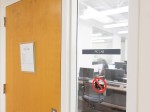Programming experience is quickly becoming a requirement for students in the College of Letters and Science to get internships and jobs.
If you haven’t had prior coding experience though, brace yourself for a world of pain.
Students in the college often look into taking Program in Computing courses to satisfy major requirements or prepare for the industry.
The PIC series offered by the mathematics department is designed for students with no prior programming experience. But the pace of the classes and the way professors, who are experts in their fields, communicate the subject matter can make it seem otherwise. Students can easily be overwhelmed by the influx of information that is often unrelated to many students’ fields of study. Completing PIC assignments can, for many, feel like learning how to ride a bike in the Tour de France.
With no tutoring resources for PIC students, finding help might prove as challenging as finding that summer internship. Aside from professor and teaching assistant office hours, UCLA has no PIC-specific tutoring service to help students with their coding assignments.
All that is offered is the PIC Lab, a computer lab overseen by the mathematics department for students to work on their programming homework. The PIC Lab is staffed by assistants who are supposed to maintain the lab and help students with general programming questions they have. But the amount of help they can give is limited, as they mainly help fix hardware and software problems. Becoming a lab assistant also only requires receiving a B+ or higher in PIC 10A: “Introduction to Programming,” the introductory course in the series, meaning students might have to look elsewhere if they need help with problems beyond the scope of what was taught in the courses the assistants took.
Ideally, tutors would be able to explain concepts and help students understand assignments, walking them through examples if necessary.
UCLA should offer as much with a center that maintains a rotation of undergraduate or graduate tutors who can help students in the PIC courses pick up conceptual subject matter they did not understand in class. This service could be similar to other departments’ tutoring centers, helping students just entering the PIC program.
The current setup, however, doesn’t work. Some students do homework in the PIC Lab regularly and do not even know that the lab assistants offer help.
Juliet Ottenberg, a second-year human biology and society student, for example, said she uses the PIC Lab frequently but sees the need for a tutoring service.
“When you see a problem you haven’t seen before, it would be nice to talk to someone,” Ottenbertg said, as she sat in the PIC Lab and struggled to write code that would draw an “X” for a tic-tac-toe game.
For students who don’t have an option and need to take PIC courses for their majors, understanding the material can be brutal without any extra help.
Yarden Sasson, a third-year cognitive science and biology student, said if students don’t understand what they are supposed to be learning, they need another place to find the information. He added he thinks that tutoring would have made the the PIC series more doable.
“I barely passed 10A,” Sasson said. “It was a struggle unless you had prior coding experience.”
Professor and TA office hours are limited and must accommodate all enrolled students in the course. Even in office hours, sophisticated explanations from seasoned programmers can go right over students’ heads. Students need a peer tutoring resource similar to the Student Math Center or the Undergraduate Writing Center, where they know they can get help learning the material instead of scrambling to finish assignments they don’t understand.
The Undergraduate Writing Center is a free service that provides one-on-one appointments for any UCLA undergraduate who needs help with writing assignments, and is staffed by undergraduate peer learning facilitators. The Student Math Center is a walk-in tutoring service where students in lower division mathematics courses can get help from students. These tutoring programs are widespread on campus, so it is possible for PIC to have one of its own.
UCLA seems to think otherwise. Chris Anderson, professor of mathematics and director of the PIC Lab, said the lab already serves as an equivalent tutoring center. However, lab assistants do not solely exist to help students: Their main job is to run the lab – proctoring the space and enforcing department rules. While lab assistants can be helpful in debugging, their help is insufficient for students looking to understand concepts or learn how to actually program.
A PIC center can help with this, and isn’t asking for too much. Even Anderson acknowledged that such a program is feasible.
And certainly, PIC courses are meant to be challenging. However, at the introductory level, the learning curve is higher and offering extra help beyond office hours is essential. Having a course be challenging is one thing, but the challenge is rendered meaningless if students don’t even have a chance at succeeding.
If UCLA is concerned about its students’ futures and wants to continue producing competitive job candidates, it should give students ample resources to understand esoteric subjects like programming. A tutoring service could be the difference between students feeling like they’re biking in the Tour de France and students learning skills that make them marketable.
